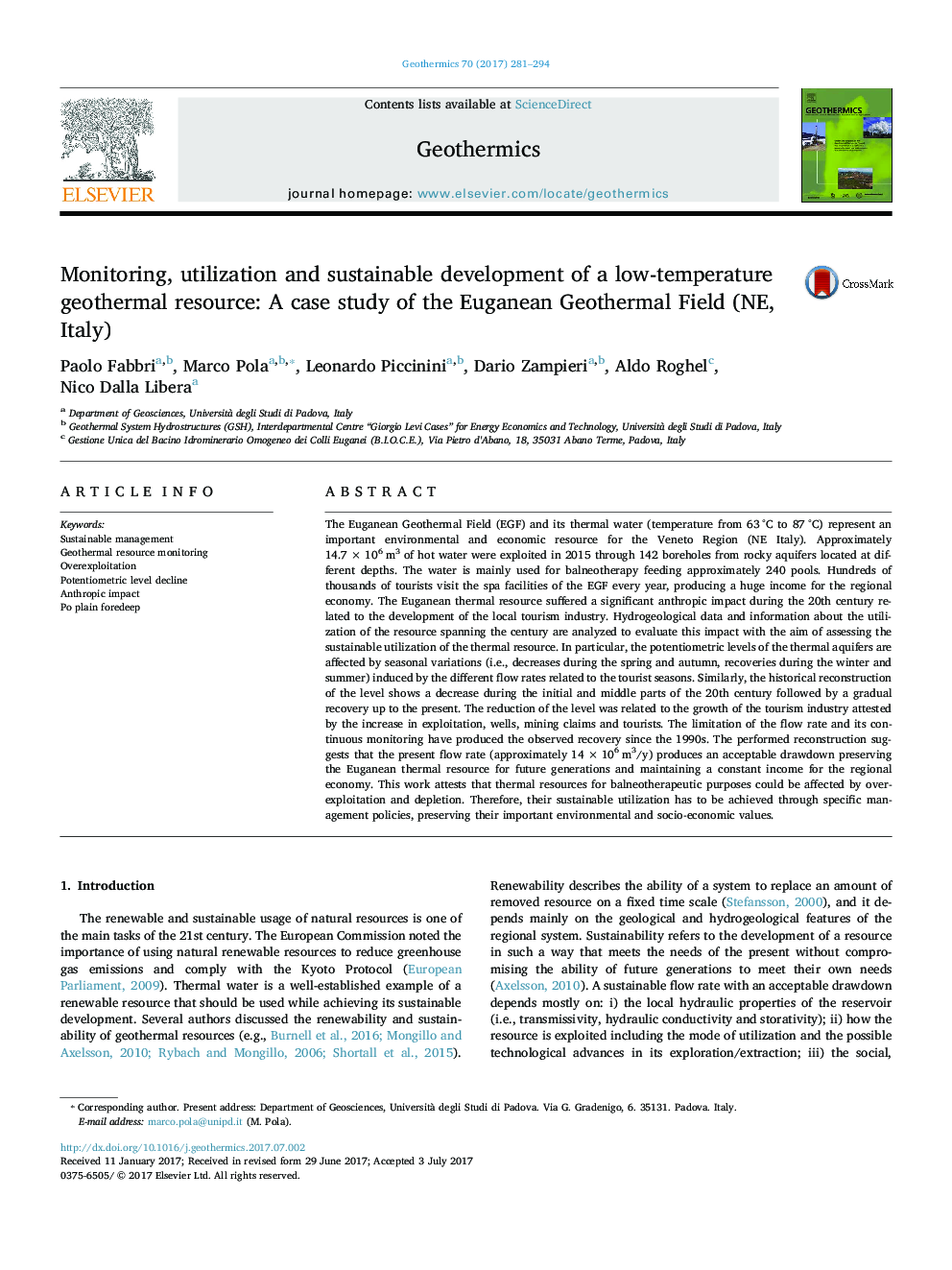| کد مقاله | کد نشریه | سال انتشار | مقاله انگلیسی | نسخه تمام متن |
|---|---|---|---|---|
| 5478653 | 1521899 | 2017 | 14 صفحه PDF | دانلود رایگان |
عنوان انگلیسی مقاله ISI
Monitoring, utilization and sustainable development of a low-temperature geothermal resource: A case study of the Euganean Geothermal Field (NE, Italy)
دانلود مقاله + سفارش ترجمه
دانلود مقاله ISI انگلیسی
رایگان برای ایرانیان
کلمات کلیدی
موضوعات مرتبط
مهندسی و علوم پایه
علوم زمین و سیارات
ژئوشیمی و پترولوژی
پیش نمایش صفحه اول مقاله

چکیده انگلیسی
The Euganean Geothermal Field (EGF) and its thermal water (temperature from 63 °C to 87 °C) represent an important environmental and economic resource for the Veneto Region (NE Italy). Approximately 14.7 Ã 106 m3 of hot water were exploited in 2015 through 142 boreholes from rocky aquifers located at different depths. The water is mainly used for balneotherapy feeding approximately 240 pools. Hundreds of thousands of tourists visit the spa facilities of the EGF every year, producing a huge income for the regional economy. The Euganean thermal resource suffered a significant anthropic impact during the 20th century related to the development of the local tourism industry. Hydrogeological data and information about the utilization of the resource spanning the century are analyzed to evaluate this impact with the aim of assessing the sustainable utilization of the thermal resource. In particular, the potentiometric levels of the thermal aquifers are affected by seasonal variations (i.e., decreases during the spring and autumn, recoveries during the winter and summer) induced by the different flow rates related to the tourist seasons. Similarly, the historical reconstruction of the level shows a decrease during the initial and middle parts of the 20th century followed by a gradual recovery up to the present. The reduction of the level was related to the growth of the tourism industry attested by the increase in exploitation, wells, mining claims and tourists. The limitation of the flow rate and its continuous monitoring have produced the observed recovery since the 1990s. The performed reconstruction suggests that the present flow rate (approximately 14 Ã 106 m3/y) produces an acceptable drawdown preserving the Euganean thermal resource for future generations and maintaining a constant income for the regional economy. This work attests that thermal resources for balneotherapeutic purposes could be affected by overexploitation and depletion. Therefore, their sustainable utilization has to be achieved through specific management policies, preserving their important environmental and socio-economic values.
ناشر
Database: Elsevier - ScienceDirect (ساینس دایرکت)
Journal: Geothermics - Volume 70, November 2017, Pages 281-294
Journal: Geothermics - Volume 70, November 2017, Pages 281-294
نویسندگان
Paolo Fabbri, Marco Pola, Leonardo Piccinini, Dario Zampieri, Aldo Roghel, Nico Dalla Libera,